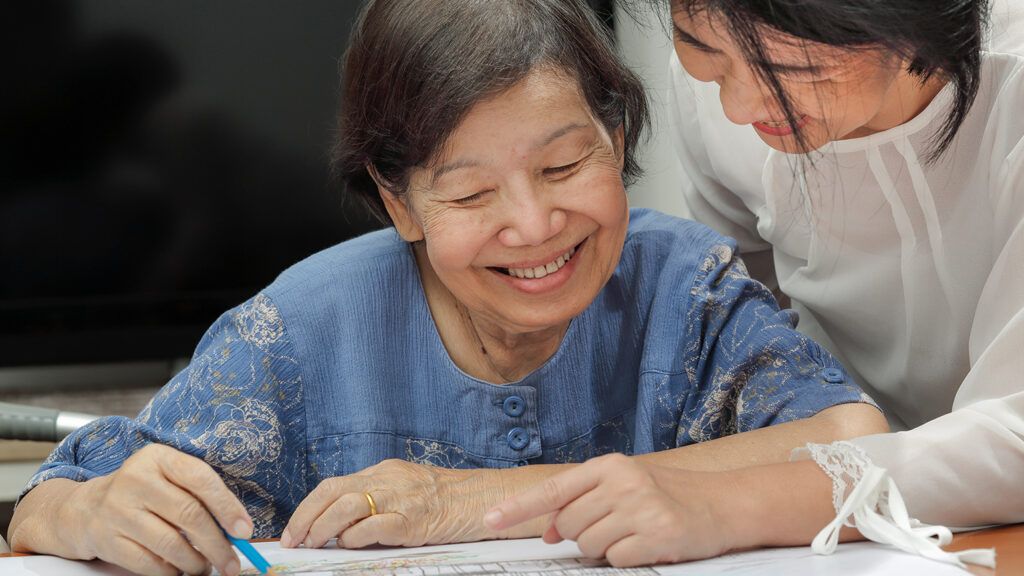Sara Powers, PhD is a Research Scientist with the Center for Research and Education at Benjamin Rose Institute on Aging
Regardless of where you live or your circumstances, a natural disaster is always a possibility. The California wildfires, as well as Hurricanes Florence and Michael, are just three recent examples of events that left a wake of newly homeless who now face the daunting task of rebuilding. While these events present huge challenges, for the caregiver of someone with a disability or illness, the challenge is even greater. But by planning ahead before a disaster threatens, you can do much to head off difficulties.
Even the seasonal weather cycle, with thunderstorms or snow and ice, can disrupt everyday life with power outages, downed trees or limited access to transportation. You might find yourself needing to live without power or stay away from home for several days. Being proactive can help immensely in protecting your loved one and allowing for things to run more smoothly if something should happen. You can take a major step in the right direction by creating an emergency preparedness plan.
Follow these tips to help you plan for natural disasters or other emergencies that may unexpectedly impact your caregiving efforts:
1. Start by discussing plans with your loved one.
Older adults are typically the least prepared of any age group for a natural disaster, according to the American Psychological Association. When you and your loved one are having a calm day, sit down to talk about preparing for disasters and emergencies. Don’t spend time spinning out dire scenarios, which might lead to anxiety. Instead, just mention that it’s always a good idea to be prepared. If they have faced a problem like a power outage before, ask about what they might like to do to be prepared in the future. What are their potential evacuation routes? Where are the closest designated storm shelters? If your loved one does not live with you, include neighbors in discussions about their emergency plan to better facilitate evacuations, communication and disaster preparation when you cannot get to your loved one right away.
2. Draw up a checklist and put together an emergency kit.
Keep track of your loved one’s medications, dietary issues and any other important information with a checklist that includes notes like: he or she needs insulin, takes the following medications, requires special foods, etc. Then assemble a kit with all the necessary supplies. Make sure your kit includes:
- A current list of all medications and dosages
- A 4 to 7-day supply of all medications
- Medical equipment your loved one needs such as oxygen or hearing aids or hearing aid batteries
- Insurance cards and benefit information, including:
- Medicare
- Social Security
- Homeowner’s Insurance
- Flood insurance
- Copies of legal documents, including:
- Wills
- Advance Directives
- Power of Attorney
You can protect important documents and medications by placing them in waterproof containers. Try to have some cash on hand in case you need to buy additional supplies. You can also use RxOpen after a disaster to track which pharmacies are open to replenish medications as needed. For further advice, read the Federal Emergency Management Agency handout.
3. Think about what your loved one will need in the emergency and afterward.
Coping with an emergency situation is stressful and unnerving for anyone, and will probably feel that way for the person you care for. It is important to consider how your loved one may respond to an emergency situation, react to an evacuation procedure and cope with the aftermath of a natural disaster. If you are the caregiver of someone with dementia, staying at a community shelter may be complicated by the person’s memory loss, confusion or difficult behavior. Consider creating an “awareness card” that you can hand out to shelter volunteers to inform them of your loved one’s condition and help them better understand your needs as a caregiver.
Once you are both back home, be on guard against credit card scams, fraudulent contractors or fake charitable donation requests. AARP’s “Dealing with Disaster” manual provides more steps you can take to protect your loved one against fraud and identity theft after a disaster.
If you would like to take additional steps to assure your loved one’s safety, consider:
- Advocating for more formalized crisis training in your area
- Speaking with fellow caregivers through local or online support groups to learn what steps they have taken to prepare
- Talking with staff at hospitals or care facilities about emergency plans
- Seeking counsel and guidance from your local place of worship
Numerous resources are available to help you. Know that you can ask for help whenever you need it, and remember that you are not alone!
For more information about finding relief after a disaster, check out the National Council on Aging’s Benefit’s Check Up.





